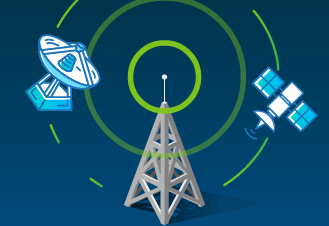
Digital connectivity, supported by cross-border data transfers, is increasing with new infrastructure investment and innovation in telecom and IT networks, such as:
- Cross-border terrestrial and submarine cabling systems. Information networks are supported by more than 1.3 million kilometers of terrestrial and submarine cabling that allows data to move across borders.
- Cross-border wide-area networks. These networks encompass new cellular technologies (such as 5G) and updates to technologies (such as 4G LTE) that can connect devices globally. With more than $1 trillion in 5G capital expenditures, telecom companies and other service providers are building out a 5G architecture designed to operate in a cross-border cloud-enabled environment. 5G networks can carry vast quantities of data — up to 10 TB/s/km2 — for numerous simultaneous users across the globe.
- Cross-border low-power wide-area networks (LPWAN). LPWAN innovations include narrowband Internet of Things (IoT) and LTE-M technologies, which enable long-distance IoT data transmissions at a lower cost and lower power consumption than 4G and 5G networks of smartphones and similar computing devices.
- Cross-border 6G innovation. Emerging plans for 6G technologies envision cross-border communication capability in the high GHz and THz bands and enhanced edge networking applications.
- Cross-border satellite connectivity. Thousands of newly deployed low-earth orbit (LEO) satellites — small, low-orbit devices offering better latency and signal strength over legacy infrastructure — promise to improve cross-border connectivity for remote or underserved regions of the globe.
- Cross-border connectivity potential of photonics. New photonics (optics)-based technologies can improve performance indicators in cross-border connectivity relative to current electronics-based technologies.
